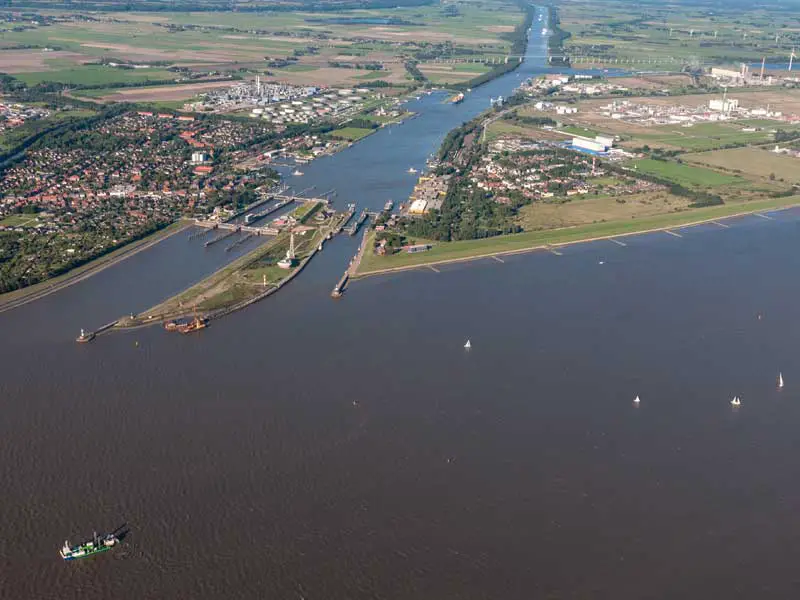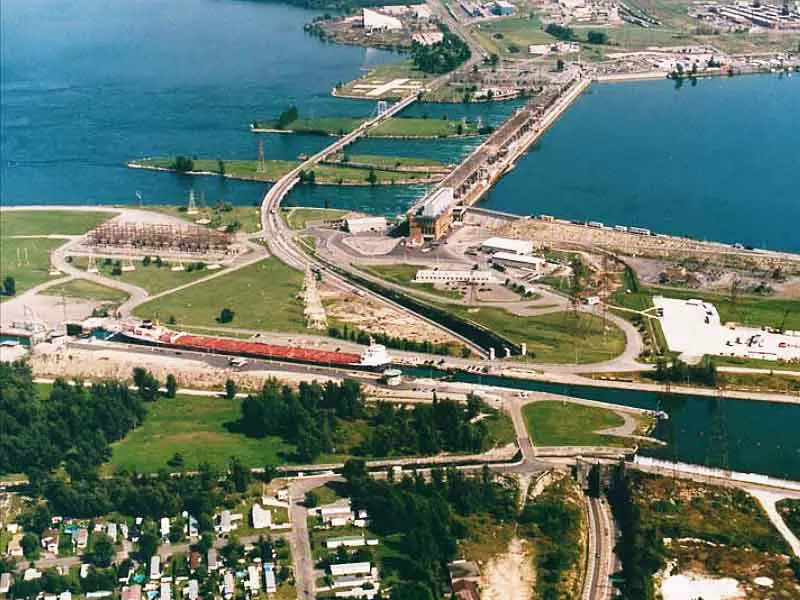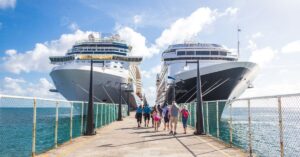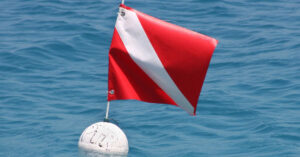Ship Canals are natural or artificial waterways that connect oceans, seas, rivers, or lakes to service ships and water transportation.
Canals are an essential player in countries’ commerce and their bulk product transportation because of their role in reducing the time of product transportation and cutting the cost. Nowadays, canals are more prominent. Ships canals create a shortcut and avoid lengthy routes; they navigate ships by either connecting two bodies of waters or cities, provide inland cities with a direct shipping link to seas or oceans, and much more.
World Famous Canals
Canals have existed for thousands of years; the following are the most famous thirteen ship canals:
1. Jing–Hang Grand Canal
The Grand Canal, or as known to the Chinese as the Jing–Hang Grand Canal, is the longest canal or artificial river globally and is listed in UNESCO world heritage sites. The canal starts in Beijing, passes through Tianjin, Hebei, Shandong, Jiangsu, Zhejiang, and ending on Hangzhou, linking China’s two longest rivers, the Yellow River and Yangtze River.
The canal plays a significant role in China’s economy, facilitating and increasing the trade between the north and south. It is still used heavily to this day.
Year Opened: 5th century BC.
Canal Length: 1,776 km (1,104 miles).
Start Point: Beijing.
End Point: Hangzhou.

2. Suez Canal
The Suez Canal is an artificial waterway connecting the Mediterranean Sea to the red sea through the Suez City in Egypt, dividing Africa and Asia. The canal offers a direct route between the North Atlantic and the northern Indian Ocean, thus reducing the journey distance from the Arabian Sea and the Indian Ocean to Europe.
The original canal featured a single-lane waterway with passing locations in the Ballah Bypass and the Great Bitter Lake. In August 2014, a construction project to speed the canal’s transit time was launched by the Egyptian government to expand and widen the Ballah Bypass. In February 2016, the new side-channel was completed and officially opened.
Year Opened: 1869.
Canal Length: 193.3 km (120.1 miles).
Maximum Ship Size (Length x Berth x Draft): Unlimited x 78m x 20m.
Start Point: Egypt – Port Said.
End Point: Egypt – Port Tewfik.

3. Corinth Canal
The Corinth Canal connects the Gulf of Corinth in the Ionian Sea with the Saronic Gulf in the Aegean Sea. The canal was dug through the isthmus at sea level and has no locks. Due to the limited size of the canal, it is impassable for many modern ships. The canal serves mainly as a tourist attraction and has minor economic importance.
Year Opened: 1893.
Canal Length: 6.4 km (4 miles).
Maximum Ship Size (Length x Berth x Draft): Unlimited x 17.6m x 7.3m.
Start Point: Greece – Gulf of Corinth in the Ionian Sea.
End Point: Greece – Saronic Gulf in the Aegean Sea.

4. Manchester Ship Canal
The Manchester Ship Canal is an inland waterway that connects Manchester to the Irish Sea. The canal contains several locks that lift the passing vessels about 18 m to the canal’s terminus in Manchester. The canal is now owned by a private company, which plans to redevelop, expand, and increase shipping from 8,000 containers a year to 100,000 by 2030 as part of their expansion project.
Year Opened: 1894.
Canal Length: 58 km (36 miles).
Maximum Ship Size (Length x Berth x Draft): 183m x 20m x 9m.
Start Point: United Kingdom – Eastham Locks.
End Point: United Kingdom – Salford Quays.

5. Kiel Canal
The Kiel Canal connects the North Sea to the East “Baltic” Sea; the canal was previously known as the Kaiser-Wilhelm-Kanal. Besides its two sea entrances, the Kiel Canal is connected to River Eider through a short canal called Gieselau Canal.
Year Opened: 1895.
Canal Length: 98 km (61 miles).
Maximum Ship Size (Length x Berth x Draft): 310m x 42m x 14m.
Start Point: Germany – Brunsbüttel.
End Point: Germany – Kiel.

6. Houston Ship Channel
The Houston Ship Channel is part of the Port of Houston, one of the busiest seaports in the world. The channel provides a passageway for ocean-going vessels between Houston terminals and the Gulf of Mexico. The channel has multiple terminals and private docks. The major terminals include Turning Basin, Barbours Cut, and Bayport. The major private docks include the ExxonMobil Baytown Complex and the Deer Park Complex.
The channel has five vehicle crossings: Washburn Tunnel, Sidney Sherman Bridge, Sam Houston Bridge “known as the Beltway 8 Bridge”, Fred Hartman Bridge, and Lynchburg Ferry.
Year Opened: 1914.
Canal Length: 80 km (50 miles).
Maximum Ship Size (Length x Berth x Draft): 161m x 80m x 14m.
Start Point: The United States – Houston
End Point: Gulf of Mexico.

7. Panama Canal
The Panama Canal is an artificial waterway that connects the Atlantic Ocean with the Pacific Ocean. The Panama Canal greatly reduces the sailing time for ships to travel between the Atlantic Ocean and the Pacific Ocean, avoiding the lengthy and hazardous Cape Horn route around South America and the even less popular route through the Arctic Archipelago and the Bering Strait.
Canal locks at each end lift ships up to Gatun Lake and then lower the ships at the other end. The original locks are 32.5 m wide. Between 2007 and 2016, a wider third lane of locks was constructed; the new locks allow transit of larger ships “neo-Panamax”.
The Panama Canal is one of the largest and most sophisticated engineering projects ever undertaken. The American Society of Civil Engineers has ranked the Panama Canal, one of the seven wonders of the modern world.
Year Opened: 1914.
Canal Length: 77 km (48 miles).
Maximum Ship Size (Length x Berth x Draft): 366m x 49m x 15m.
Start Point: Panama – Caribbean Sea.
End Point: Pacific Ocean.

8. Welland Canal
The Welland Canal is a waterway that connects Lake Ontario and Lake Erie and enables ships to ascend and descend the Niagara Escarpment and bypass Niagara Falls. The maximum ship height is restricted to 35.5m because the Garden City Skyway passes over the canal. The remaining highway and railroad crossings of the Welland Canal are either movable bridges or tunnels under the canal.
The Welland Canal passes approximately 3,000 ships a year which is about 40,000,000 tons of cargo.
Year Opened: 1932.
Canal Length: 43.4 km (27 miles).
Maximum Ship Size (Length x Berth x Draft): 226m x 24m x 8m.
Start Point: Canada – Port Weller.
End Point: Canada – Port Colborne.

9. White Sea-Baltic Canal
The White Sea-Baltic Canal is a waterway that connects the White Sea with Lake Onega, further connected to the Baltic Sea. The White Sea Canal is inadequate for most sea-going vessels due to its minimal depth of 3.5 m on which limits its economic advantages.
The canal runs partially along several canalized rivers and Lake Vygozero and carries only light traffic and small boats.
Year Opened: 1933.
Canal Length: 227 km (141 miles).
Maximum Ship Size (Length x Berth x Draft): 443m x 47m x 3.5m.
Start Point: Russia – Lake Onega.
End Point: Baltic Sea.

10. Volga-Don Canal
Lenin Volga–Don Canal is a shipping waterway that connects the Volga River (the longest river in Europe) and the Don River. The canal provides the shortest navigable route between the Caspian Sea and the world’s oceans.
The canals consist of nine canal locks on the Volga slope to raise/lower ships by 88 m from river height and four canal locks on the Don slope that raise/lower ships by 44 m. The Don locks overall dimensions are smaller than those on the Volga River; the smallest locks are 145 m long, 17 m wide, and 3.6 m deep, limiting the maximum ship size the canal can handle.
Year Opened: 1952.
Canal Length: 101 km (63 miles).
Maximum Ship Size (Length x Berth x Draft): 141m x 17m x 3.6m.
Start Point: Russia – Volgograd.
End Point: Tsimlyansk Reservoir.

11. Saint Lawrence Seaway
The Saint Lawrence Seaway is a waterway that consists of locks, canals, and channels between the United States and Canada. The seaway permits ocean-going vessels to travel from the Atlantic Ocean to the Great Lakes of North America. The seaway includes the Saint Lawrence River; the Saint Lawrence River portion consists of several locks and canals along the banks of the river to bypass several rapids and dams.
Several concerns were raised recently about the low water levels that have been recorded in the Great Lakes.
Year Opened: 1959.
Canal Length: 600 km (370 miles).
Maximum Ship Size (Length x Berth x Draft): 226m x 24m x 8m.
Start Point: Canada – Port Colborne
End Point: Canada – Montreal.

12. Danube-Black Sea Canal
The Danube–Black Sea Canal is a waterway that connects Cernavodă on the Danube River in Romania through two branches to Constanța and Năvodari on the Black Sea.
Year Opened: 1984.
Canal Length: 64.4 km (40 miles).
Maximum Ship Size (Length x Berth x Draft): 138m x 17m x 6m.
Start Point: Romania – the Danube at Cernavodă.
End Point: Black Sea.

13. Rhine-Main-Danube Canal
The Rhine-Main–Danube Canal, also called Main-Danube Canal, RMD Canal, or Europa Canal, is a waterway that connects the Main and the Danube rivers. The canal connects the North Sea and the Atlantic Ocean to the Black Sea. The canal includes sixteen locks to raise/lower ships by 25 m.
Year Opened: 1992.
Canal Length: 171 km (106 miles).
Maximum Ship Size (Length x Berth x Draft): 190m x 11m x 4m.
Start Point: Germany – Main.
End Point: Germany – Danube.

Related article: A Comparison Between Mooring Buoys.
Reference:
- Wikipedia encyclopedia.






